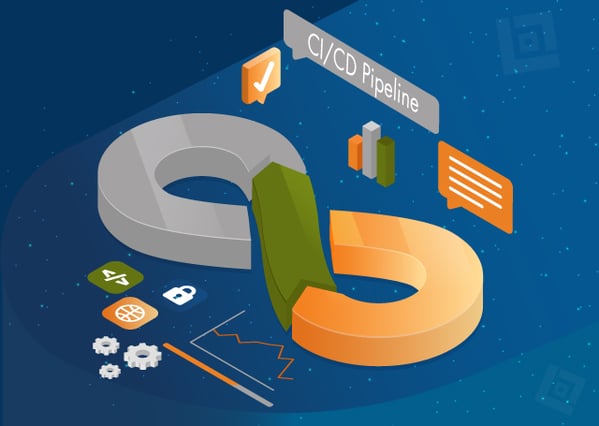
Software development is the process of creating computer applications using one or more programming languages. It is designed to provide end-users with functionality that can address specific personal or business objectives.
With the continuously growing demand for software developers, the diversity in the type of software development services these professionals do is simply widespread.
The four basic types of software are:
- System software- System software is designed to provide a platform for other software. To put it in simple words, system software includes operating systems like Linux, Microsoft Windows, macOS, industrial automations, game engines and software as a service applications.
- Application software- Application software, or app, in short, is software that performs specific tasks for the end-user. For instance, Microsoft Excel or Word are common application software. Even common web browsers, like Google Chrome and Firefox can be considered as application software.
- Programming software- This kind of software helps programmers develop other kinds of software. It is typically an individual program, or set of programs, that helps software developers to create, debug and maintain other applications and software.
- Embedded software- This can be defined as specialized programming tools in embedded devices that help in the functioning of machines. This kind of software helps to manage various hardware systems and devices. Embedded software can be compared to operating systems in computers.
Developing these programs is typically a planned initiative consisting of several steps and stages that lead to the creation of operational software. This whole process is known as the software development life cycle, or the SDLC.
What Is a SDLC?
A software development life cycle, simply called SDLC, is a systematic process in building applications that ensure the accuracy of the developed program.
The main objective of the SDLC process is to provide end-users with high-quality software that meets their expectations by a predetermined date and in an allocated budget.
The whole Software Development Life Cycle can be divided into the following phases:
-
Phase 1: Requirement Analysis
Gathering and analyzing the requirements is the first phase in the SDLC process. Senior team members conduct requirement analysis while obtaining inputs from both industry experts and stakeholders.
-
Phase 2: Feasibility Study
After completing the requirement analysis, the next step in the SDLC process is to identify and document the software needs. The process is done using the Software Requirement Specification (SRS) document. This file includes everything the developers should know with regards to what needs to be designed and developed throughout the project.
-
Phase 3: Design
The third phase of the SDLC process is where the software and system design documents are created based on the requirement specification file. This helps when defining the system architecture while also serving as input for the following SDLC phases.
-
Phase 4: Coding
After finishing the design phase, developers move on to coding where they beginy writing code based on the desired programming language.
The tasks during this phase are divided into modules or units, which are assigned to the developers involved. Throughout the Software Development Life Cycle, the coding phase takes the longest time to complete.
-
Phase 5: Testing
Once the software has been built, it is assigned to QA engineers to see how the functionalities work. Testers verify that the whole application works as intended based on their client requirements.
-
Phase 6: Install Deploy
If there are no errors or bugs discovered during the testing phase, then it is time for the deployment process to begin. Depending on the feedback from the project manager, the final build of the program is released to the end-users.
-
Phase 7: Maintenance
It’s very common that software or applications need maintenance after deployment. The maintenance can be due to poor user experiences, security upgrades or the need for configuration testing on new devices. The following software development services can then happen:
-
Bug fixing: The client or users report any bugs that their end-users may have encountered.
-
Upgrade: The application is upgraded to a newer, better version of the software.
-
Enhancement: The developers add new features into the existing program.
Popular SDLC Models
Having learned the various SDLC phases that a program goes through, it’s time to discuss some of the most essential models in the Software Development Life Cycle.
-
Waterfall model: In the waterfall model, the entire process of software development is separated into different SDLC phases, with the outcome of a phase acting as the input for the next.
-
Incremental model: An incremental approach is a series of waterfall cycles wherein the requirements are divided into groups at the beginning of the project.
-
Agile model: The agile methodology is an approach that promotes continuous development and testing throughout the SDLC process in any project.
-
V-Model: This is a type of SDLC model where the testing and development stages are planned in parallel.
-
Spiral model: This risk-driven SDLC model assists teams in adopting elements of various process models combined.
Outsourcing Software Development
Software development outsourcing is a practice in which certain development functions in an organization are delegated to an external service provider.
Instead of being done in-house, outsourcing software development companies are hired so that firms can focus on other important activities that need to be done internally.
There are three types of software development outsourcing prevalent today. These are:
-
Onshore: Is the practice of sourcing developers from a provider within the same country
-
Nearshore: Is the practice of hiring software engineers from a neighboring country
-
Offshore: Is when developers are outsourced from a provider in a distant country
Advantages of Outsourcing for Software Development
There are many benefits in outsourcing software development services, which is why many organizations are relying on these solutions today.
Here are the advantages of outsourcing software development externally:
-
Flexibility: You don’t need to interview, hire, or train staff when you outsource your development services elsewhere. This allows you to allocate time and resources to other important activities such as marketing and business development.
-
Cost-saving: Outsourcing your software development needs to countries with a lower cost of living often means more savings for you. Meanwhile, hiring a nearshore partner can lead to less overall expenses since they can work quickly and efficiently at an affordable rate.
-
Time-saving: Speed is important in the competitive digital environment today. Being able to leverage time differences that enable 24 hour development decreases the overall time necessary to develop and test a piece of software or application.
-
Access to domain knowledge: Software experts eat and breathe emerging opportunities in their industry. Bringing these people into your process can help by providing you with in-depth knowledge in case you decide to expand into new markets. Certain industries that require specific domain knowledge are healthcare, finance and distance learning.
-
Ability to scale teams: Custom software development services let you scale up and down at any time based on your needs.
-
Meet customer expectations: Experienced outsourcing development firms can help you identify and research your target audience. These companies spend time engaging in personal development, so you can understand your customers better and meet their expectations.
Conclusion
Software development services have and will continue to be one of the most popular outsourced solutions around the world. For companies that would like to benefit from cost savings, scalability, and convenience, software development outsourcing is an excellent option to consider. Outsourcing companies are more than able to provide the custom software development services that you need. To know more about how QASource can help, contact us today.


